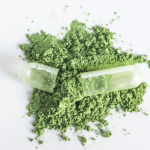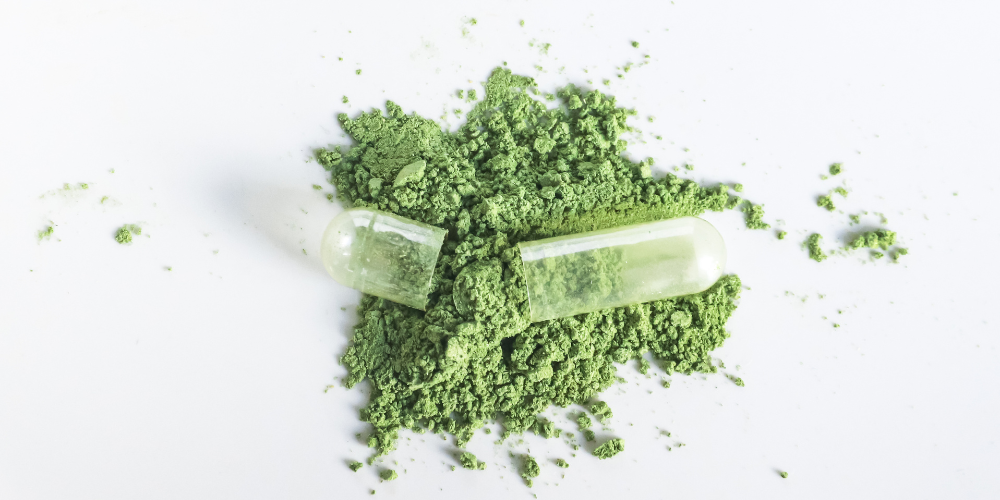
Free Shipping on Orders Over $75!
JOIN OUR EMAIL LIST FOR 20% OFF, weekly coupons up to 30% OFF
How Long Does Kratom Stay in Urine? [Long Term Risks And Remedy]

Although kratom may be legal in most parts of the United States, it isn’t legal everywhere. Therefore, it’s only natural to be concerned about how long it stays in your urine.
Kratom is likely detectable in urine between 5 to 9 days. Since few drug tests look for kratom alkaloids such as mitragynine, there is a lack of information on how long kratom stays in urine. As with other drugs, kratom stays in the body longer with regular consumption.
In this post, I want to put any concerns you have about kratom staying in your urine to rest. I’ve got some tips to help you clear it quickly, and some reassuring words on why you probably don’t need to worry.
How Long Does Kratom Stay in Urine?
Due to the limited and conflicting research, it’s impossible to give a definitive answer. But the consensus is that kratom sticks around in urine for between 5 to 9 days – that’s longer than some drugs but less than the likes of marijuana.
Kratom stays in urine for a similar length of time as it stays in the blood. Kratom is, however, detectable in hair for up to 90 days.
Several factors influence how long kratom stays in urine, including age, weight, speed of metabolism, and genetics. I’ll touch more on those later.
Does Kratom Show Up on a Urine Test?
Kratom does not typically show up on a drug test, but in most places, it’s not illegal – so there’s no need to test for it.
A typical urinalysis looks for five classes of drugs: amphetamines, cannabinoids, cocaine, opiates, and PCP. Most of the time, you’ll have no reason for concern.
However, a specialized urine test potentially could check for mitragynine, 7-hydroxymitragynine, and other kratom alkaloids. Urine tests for kratom definitely exist.
Premier Biotech is advertising urine drug screens that can detect even low levels of kratom alkaloids. If those tests are going to be used anywhere, it will be in states, counties, or cities where kratom is banned.
Therefore, if you do live in Alabama, Indiana, Wisconsin, or anywhere else that has banned kratom, you should be on your guard.
Kratom has potent sedative effects which could affect work productivity and increase the risk of accidents if operating heavy machinery. Checks will probably only become more common as kratom grows in popularity.
If an employer suspects you’re taking kratom and it’s not legal in your area, a urine test might not be how they check. Since kratom is detectable in blood for 9 days and hair for up to 90 – blood and hair tests would be more reliable ways of testing for kratom.
Saliva tests for kratom are not currently available, but kratom may be detectable in saliva.
Half-Life of Kratom
Mitragynine, the primary alkaloid in kratom, has a half-life of around 24 hours, according to a study published in Drug Design, Development and Therapy.
However, another study in Brain Research Bulletin found that mitragynine’s half-life is less than two hours.
The huge variation between studies confirms how little high-quality research there is on kratom. Other kratom alkaloids may have shorter or longer half-lives.
Research suggests 7-hydroxymitragynine has a half-life of fewer than 3 hours. Given the uncertainty, it’s best to be cautious, and assume kratom lingers in your body for a while.
The half-life of a drug determines how long it stays in your system. Let’s work with the conservative 24-hour estimate for mitragynine. In this case, 50% of the dosage is removed within one day, 75% within two, and around 97% after five days.
At this point, the chance of a positive kratom test is minimal. If mitragynine is proven to have a much shorter half-life, it could be out of your system in as little as a day or two.
Urine tests only detect a drug if it’s present at a certain level. Some tests are more sensitive than others, meaning the threshold to flag up a positive test is much lower.
What Factors Influence How Long Kratom Stays in Urine?
Age
The science shows that the older you are, the longer kratom stays in your system, and therefore your urine. Older people tend to take other medications to manage their health, which may impact how long kratom remains detectable.
Renal function also declines with age, making it harder for the body to filter out kratom metabolites.
Bodyweight
Bodyweight – and specifically fat levels – influence how quickly your body removes kratom. Everybody has some level of fat, but the larger you are, the more fat molecules there are for mitragynine and other kratom alkaloids to absorb into.
Alkaloids absorbed by fat molecules stay in the body for longer. Thankfully, it works both ways. Slimmer people with less body fat can flush kratom out more quickly.
Genetics
Kratom may stay in your body longer for no other reason than bad luck. Genetics influence how quickly your body breaks down and clears out kratom, and there’s nothing you can do about it.
Different genetics means a different set of enzymes – some enzymes are more efficient at removing kratom than others.
How to Get Kratom Out of Your System Quickly
Worried that you might fail a drug test for kratom? Don’t worry. Even if you take large doses of kratom regularly, there are steps you can take to help speed up the removal of alkaloids from your system.
Avoid fatty foods
Steering clear of fatty foods when detoxing from kratom is crucial. We looked at how body fat extends how long kratom stays in your system, and fatty foods have a similar effect.
Topping up on fatty meats, cheeses, savory snacks, and chocolates just increases the number of fatty molecules in your body for kratom alkaloids to latch onto.
During detox, adopt a healthy diet with foods high in water content. Melons, pineapples, celery, broccoli, bell peppers, and many other fruits and vegetables are great at cleaning up your system quickly.
Stay hydrated
On that note, keeping hydrated with lots of water will make it much easier to pass a drug test. Don’t go over the top, but 2 to 3 liters of water per day will help wash out any toxins.
When detoxing, avoid drinks that cause dehydration, such as coffee, tea, alcohol, and soda.
Exercise
Regular exercise is not just good for your overall health, it can also help accelerate kratom removal. Exercise speeds up your metabolism and burns fat, giving kratom less time to stick around.
All these tips have one thing in common: keeping healthy. The healthier you are and the more you look after yourself day-to-day, the quicker you can eliminate kratom from your system.
Using Synthetic Urine
I don’t think you need to be worried too much about drug tests with kratom, at least not if you’re in a legal region. But if you don’t want to leave anything to chance, synthetic urine will be your new best friend.
Fake pee products are a smart way of giving drug tests the slip and can bail you out of any drug-induced sticky spot.
Synthetic urine is not quite as simple as pouring it into a sample bottle. You’ll need to learn how to get it up to temperature and keep it hidden until the big moment.
Furthermore, drug tests are getting more sophisticated, so make sure you buy up-to-date synthetic urine. If your sample is lacking creatinine, urea, uric acid, or a genuine pH level, you’re probably going to fail.
As I said, using synthetic urine to hide kratom use probably won’t be necessary. But if you live in an area where kratom is illegal, fake pee is a good trick to have up your sleeve – or down your pants!
Long-Term Risks of Taking Kratom
Most people experience few side effects from taking kratom. Of these side effects, dry mouth, heartburn, nausea, and vomiting are among the most common.
However, not everyone gets on so well with kratom. More serious side effects include hallucinations, delusions, seizures, and in very few cases, death.
In addition, kratom side effects do not always occur in the short term. Extended use of kratom – especially high dosages – is accompanied by some long-term risks. Let’s take a closer look.
Addiction
Kratom and addiction have an unusual relationship. For some, kratom helps tackle addiction to opioid prescription painkillers. For others, kratom is an addictive substance that drags users into the depths and despair of dependence.
Both are true. The weaker effects of kratom compared to opioids make it an excellent substitute to relieving pain. But if you don’t have an opioid addiction, your body can potentially get hooked on the alkaloids in kratom.
If you want to learn more about kratom addiction, check out this post right here.
As we’ve explored, kratom is more dangerous in stronger dosages. But if you’re dependent on kratom, stronger dosages become the norm – and as your receptors grow more tolerant, the body demands more kratom for the same hit.
This can spiral out of control. But quitting kratom isn’t easy if you’re addicted. Kratom withdrawal symptoms can be nasty and include muscle aches, joint pain, agitation, mood swings, and flu-like symptoms.
If you take kratom regularly, you must keep a close eye on your usage. Moderating your consumption is the best way to avoid kratom addiction and dependence.
Stay in control, and make sure your experience with kratom remains a positive one!
Weight loss
While legitimately used for weight loss, kratom products have been linked to loss of appetite and eating disorders such as anorexia. Some kratom strains, including Thai, contain mitraphylline, an alkaloid associated with appetite suppression.
If you notice appetite issues or severe weight loss after taking kratom, stop using it and seek medical help immediately.
Liver and kidney damage
Long-term kratom consumption may cause liver and kidney damage. The problems usually start in the liver, the organ tasked with flushing out toxins.
In rare cases, chronic kratom use has been linked with liver disease, known as hepatotoxicity, or toxic hepatitis. Signs of liver injury include nausea, fatigue, dark urine, and jaundice. A damaged liver eventually takes its toll on the kidneys.
Kidney damage has been reported in users who regularly take large dosages and have a high tolerance to kratom. In extreme cases, long-term kratom use may even lead to kidney failure.
When the liver is unable to carry out its usual duties in filtering toxins from the body, the kidneys are left with a higher workload – this extra stress can lead to kidney failure.
For most people, kratom products are perfectly safe and the answer to pain, anxiety, depression, and more. Kratom Krush is the best place to go for your kratom needs, with all products third-party tested and meeting strict quality standards!
Did like a post? Share it with:
nimesh
Search
Table of Index
Post Categories
Related Posts
Where to buy kratom near me is a question that many users find themselves asking when looking for quality products
Finding the best Kratom Powder near me can feel difficult with so many options available locally. But steering through stores
Are you one of those scrolling on the internet for ‘7ALKS near me’? Are you looking for 7ALKS, 7-Hydroxy 15mg
7OH, or 7 hydroxymitragynine, is a significant alkaloid found in kratom that plays a crucial role in its effects. This
Curious about 7OH kratom? You’re not alone. As more people explore different botanical products, 7 hydroxymitragynine (7OH) has emerged as
Have you ever accidentally over-consumed kratom and experienced a hangover? Well, the good news is they’re easily avoidable. A kratom
Disclaimer
Must be 21 years or older to purchase kratom. Products are not for internal use. The US FDA Has Not Approved Kratom as a Dietary Supplement. We do not ship to the following states, cities and counties in the US where Kratom is banned Alabama, Arkansas, Indiana, Rhode Island, Tennessee, Vermont, Wisconsin. Sarasota County, Union County, Denver, San Diego. All sales should be 100% U.S. sales only.
Consult with a medical professional before use if taking prescription medication or affected by a serious medical condition. Always seek medical advice before using this or any other supplemental dietary product. These statements have not been evaluated by the Food and Drug Administration (FDA).
© 2025 Kratom Krush. All Rights Reserved. Operated by XXIV LLC Privacy PolicyTerms & Conditions











